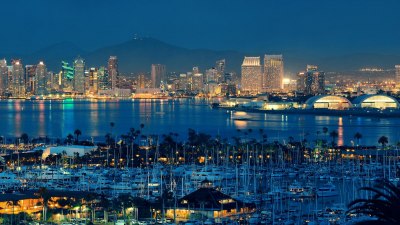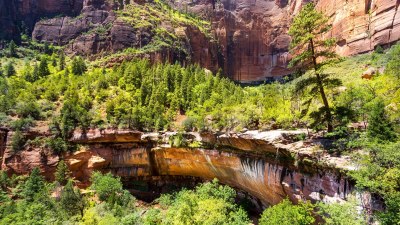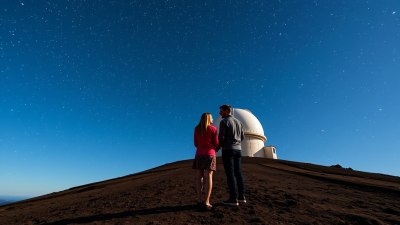The Best 3 Days of Whale Watching in California
Discover the ultimate 3-day whale watching experience in California's beautiful waters.

Image by travelscape on Freepik
Whale watching in California offers unforgettable moments with nature's giants. With the state's vast coastline, you'll find numerous locations perfect for observing these majestic creatures. Planning a three-day whale watching adventure can enhance your experience significantly. This guide will take you through the best strategies for an incredible three-day whale watching trip.
Day 1: San Diego - The Gateway to Marine Life
Start your whale watching journey in San Diego, renowned for its splendid weather and diverse marine life. San Diego's waters are primarily known for gray whales during their migration from Alaska to Mexico from December to April, making your trip perfectly timed if planned within this season.
Begin your day early by heading to the San Diego Harbor to embark on a dedicated whale watching tour. Many operators provide three to five hour excursions that offer a high chance of sighting gray, humpback, and even blue whales during the appropriate seasons. Ensure you book a cruise that utilizes experienced naturalists. They provide valuable education about the whales' behaviors, feeding habits, and migration routes.
In addition to whales, look out for playful dolphins and sea lions along the way. Keep your camera ready to capture captivating moments as these animals interact in their natural habitat. San Diego whale tours often include knowledgeable guides that share fascinating insights, enriching your overall experience.
After your tour, consider spending the afternoon exploring the vibrant Gaslamp Quarter or relaxing at the iconic La Jolla Cove. Here, you can witness local sea lion colonies basking in the sun while enjoying stunning coastal views. Bring your binoculars for better spotting and enjoy a scenic walk along the shoreline.
Day 2: Monterey Bay - A Marine Sanctuary
Unlike San Diego, Monterey Bay offers a deeper diversity of marine life due to its unique underwater geography. Famous for its marine sanctuary, Monterey Bay is a prime whale watching destination. The area is known for its populations of humpback whales, blue whales, and orcas, particularly from late spring to early fall.
On the second day, drive up the scenic Pacific Coast Highway from San Diego to Monterey. Early morning whale watching tours provide the best chances to encounter these majestic creatures in their natural habitat. Spend several hours out in the bay experiencing the thrill of whale sightings. Many tours offer guarantees, ensuring that if you don’t see any whales, you can come back for free.
While out on the water, take in the breathtaking coastal views and learn about the fascinating marine ecosystem unique to the region. The crew's guides are usually marine biologists, and their insights are invaluable. Engage with them to gain a greater understanding of the whales you encounter.
Upon returning to shore, take advantage of Monterey's rich offerings. Visit the renowned Monterey Bay Aquarium, one of the best in the world, to learn more about the fascinating diversity of marine life. Stroll along Cannery Row where you can find shops, restaurants, and local delicacies.
Day 3: San Francisco - The Golden Gate City
On your final day, make your way to San Francisco, known for the iconic Golden Gate Bridge and vibrant culture. San Francisco is an exceptional whale watching destination during the migration seasons, especially when gray whales travel along the coast.
Start your day with a whale watching adventure from Fisherman’s Wharf or Pier 39. Several tour operators offer excursions and many provide experienced guides, ensuring an enjoyable experience filled with valuable knowledge. Keep an eye out for California sea lions, and porpoises while cruising around the bay.
In addition to whale watching, the San Francisco Bay area also features diverse ecosystems. On your excursion, you may witness pelicans, stunning views of Alcatraz Island, and the Golden Gate Bridge itself. The thrill of spotting whales pops up as they breach, tail slap, or spout during their migrations – a moment that encourages a deep appreciation for nature.
After your tour, wander through the iconic streets of San Francisco, visit notable sights, and consider dining at one of the waterfront restaurants. Savor local seafood dishes or grab a bite at the famous Fisherman’s Wharf clam chowder stands. Unwind with a stroll along the waterfront, taking in the lively atmosphere.
Tips for Successful Whale Watching
Preparation is essential for an adventurous whale watching experience. Here are several tips to enhance your trip:
Choose the right season: Depending on what type of whales you wish to see, each location has specific seasons when certain species are more frequently spotted.
Dress in layers: California weather can be unpredictable at the ocean, so wear comfortable, layered clothing, plus a jacket for the cooler breezes on the water.
Bring binoculars: Binoculars can significantly enhance your viewing experience, providing closer looks at the whales and other marine wildlife.
Stay hydrated and bring snacks: Long tours can be tiring. Carry water and lightweight snacks to keep your energy up during the journey.
Respect the wildlife: It's crucial to be an ethical observer. Abide by all guidelines set by your guides during the tour to ensure both your safety and that of the whales.
California’s coast is truly a remarkable destination for whale watching. By planning your three-day itinerary in San Diego, Monterey, and San Francisco, you'll embrace all the natural beauty California has to offer. Each location provides unique experiences, making this adventure exciting and educational.
Whether you're an avid wildlife enthusiast or a casual traveler, whale watching presents an opportunity to connect with the ocean and its incredible inhabitants. Schedule your unforgettable three-day adventure and create lasting memories while witnessing the magnificent whales off the California coast.











